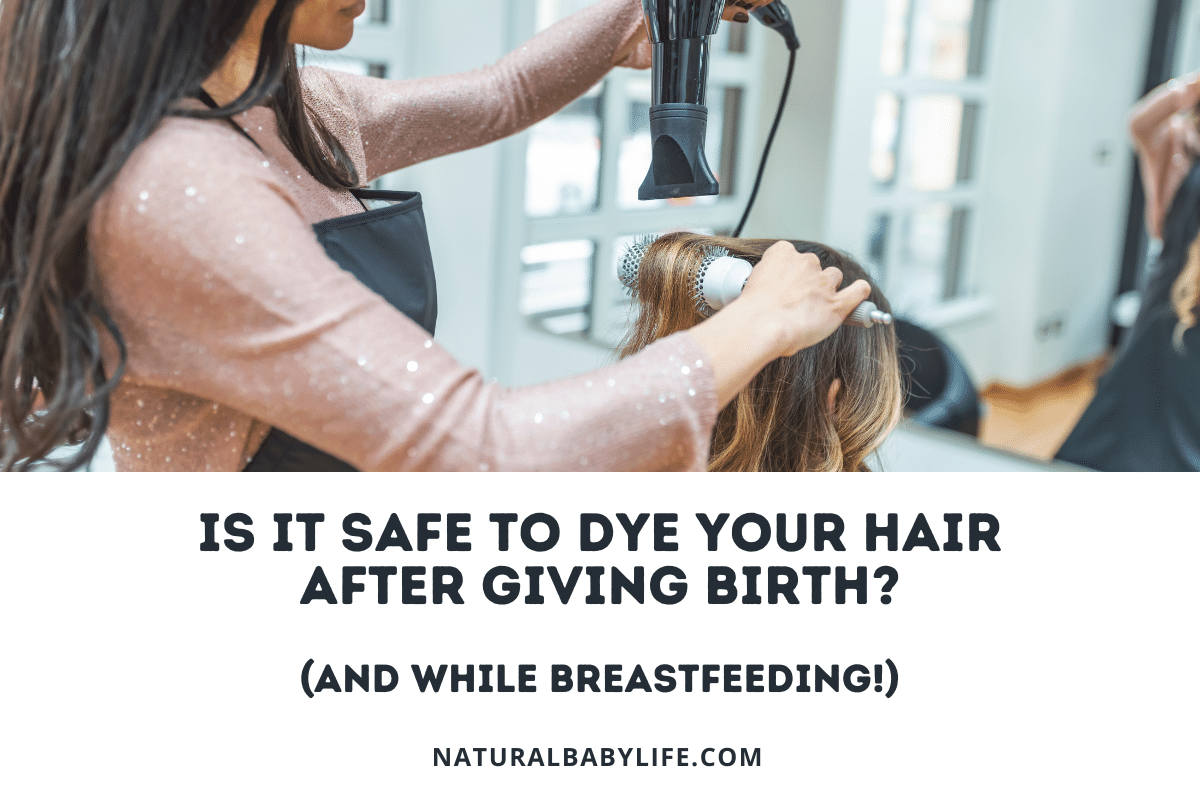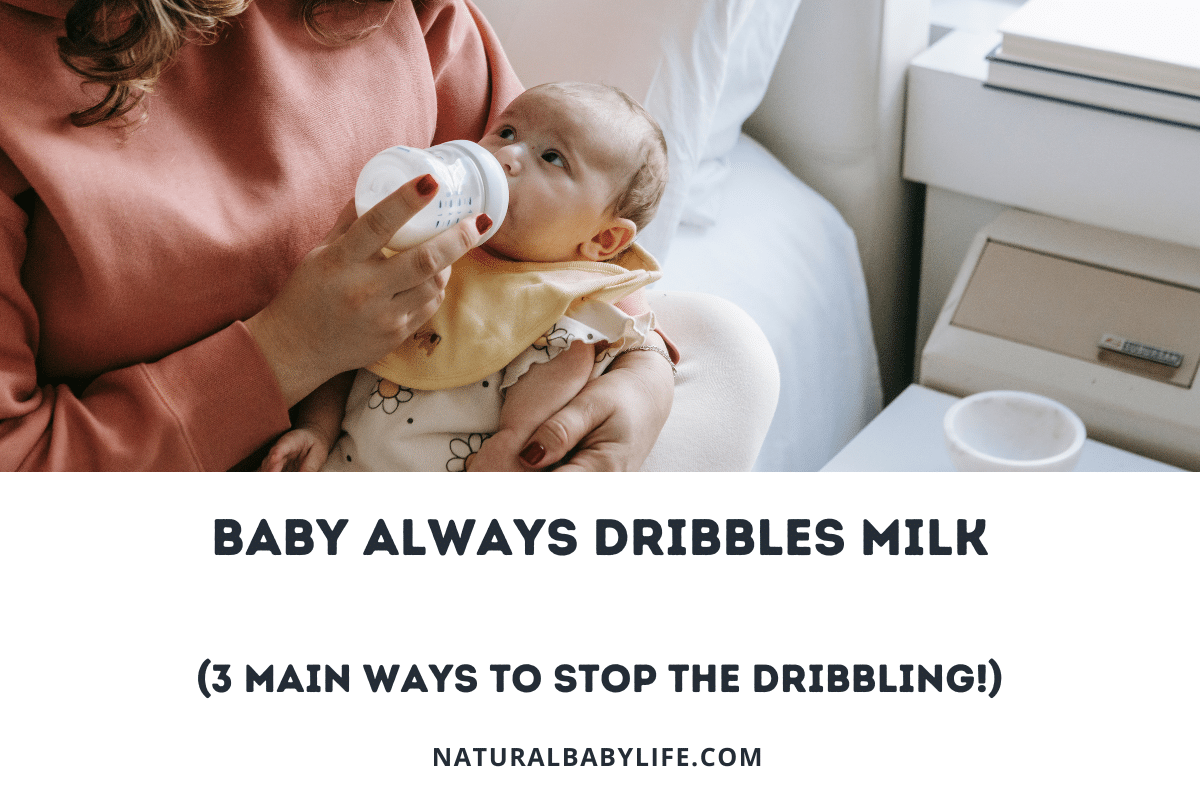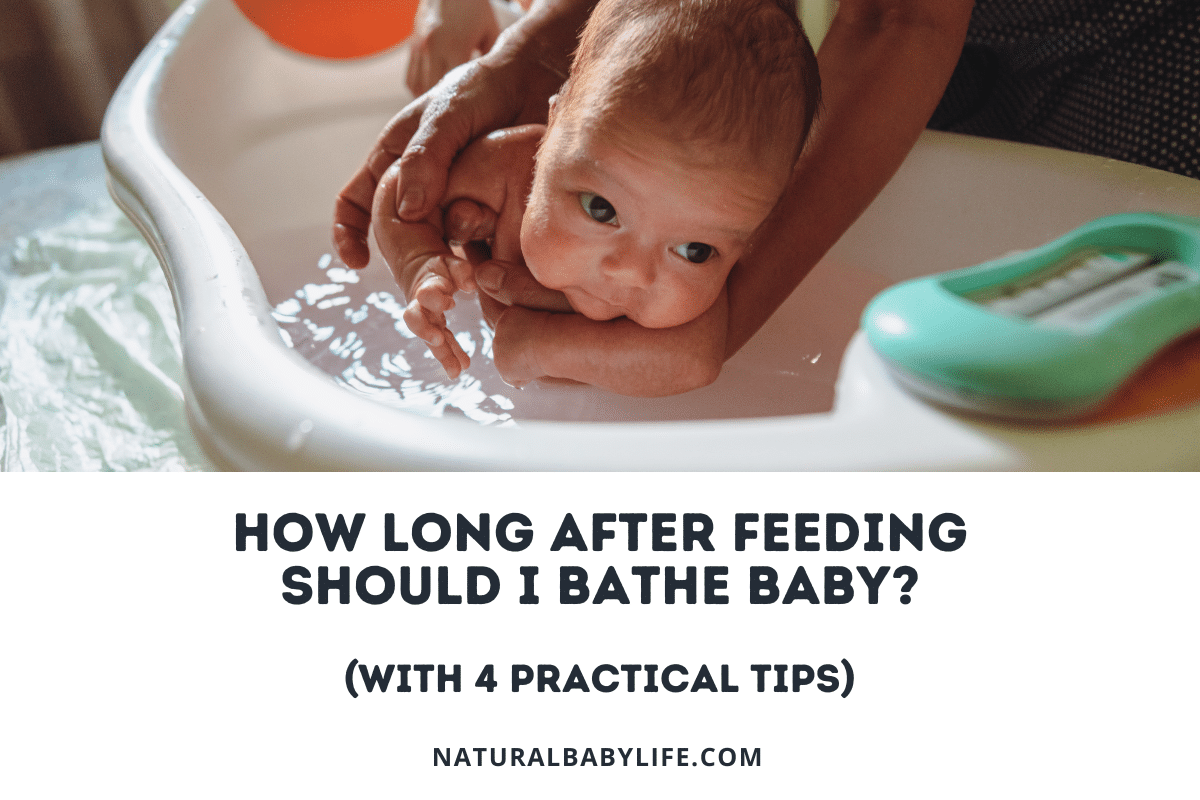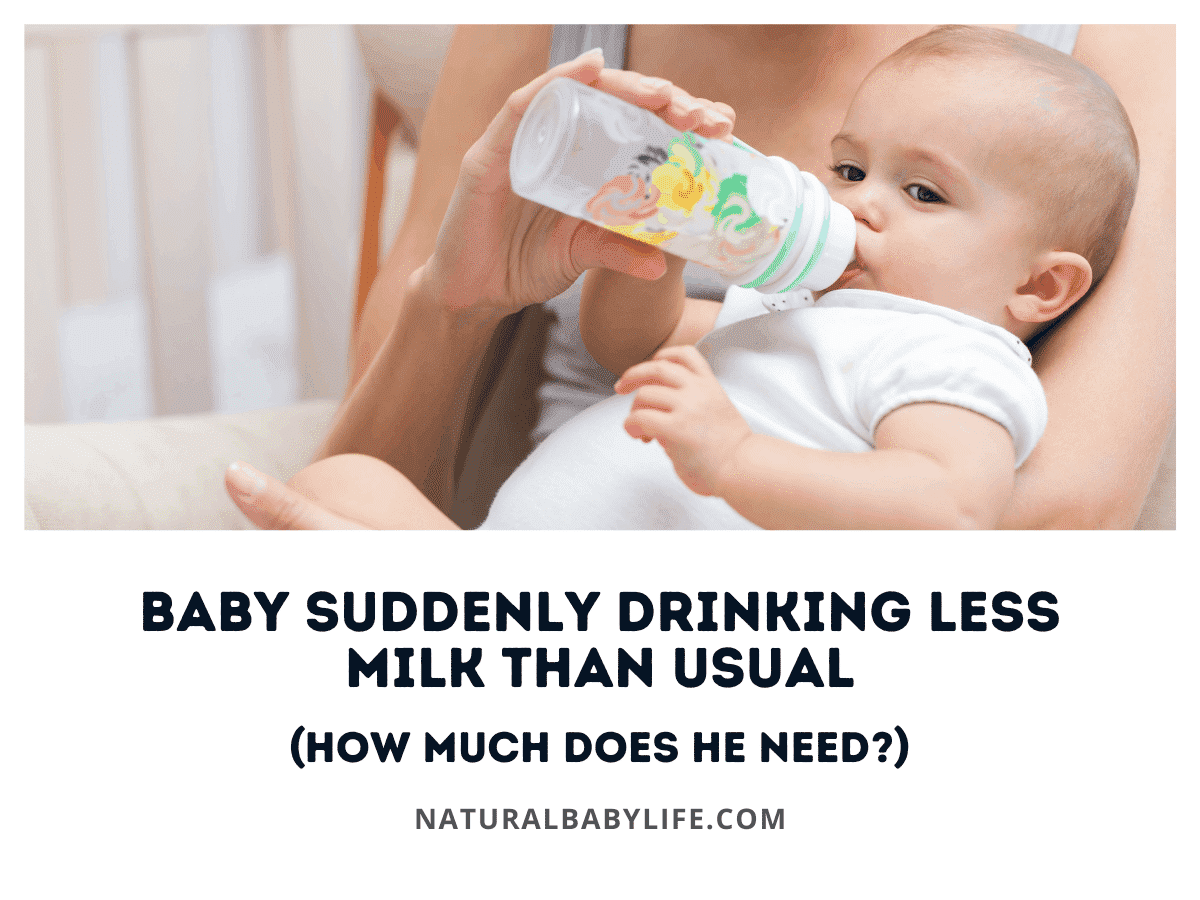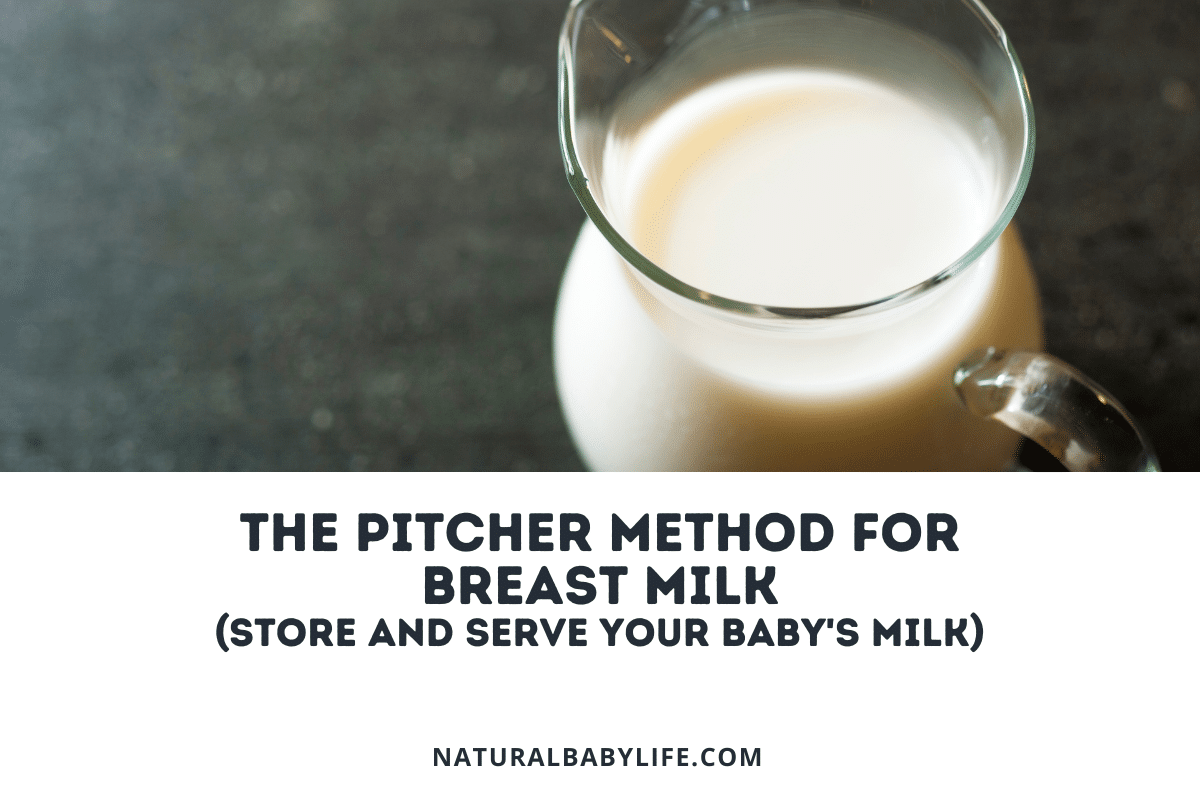One of the hardest things about being pregnant and having a newborn is not feeling like yourself anymore. After the physical strain of giving birth and the stress of adjusting to life with a newborn, if you don’t recognize yourself, you might want to do something like change your hair to bring back your confidence. This can lead you to wonder is it safe to dye your hair after giving birth?
Several studies have shown that it is safe to dye your hair after the first trimester and even while breastfeeding since the chemicals involved are unlikely to pass into the bloodstream or breastmilk. For the highest level of safety, however, there are many options available with more natural ingredients.
If you want to dye your hair while breastfeeding or after giving birth, there are precautions you need to take to ensure the health and safety of your baby.
There are also some great natural hair dye options that can be better for both of you than the mainstream brands. Keep reading to find out more about dying your hair after pregnancy.
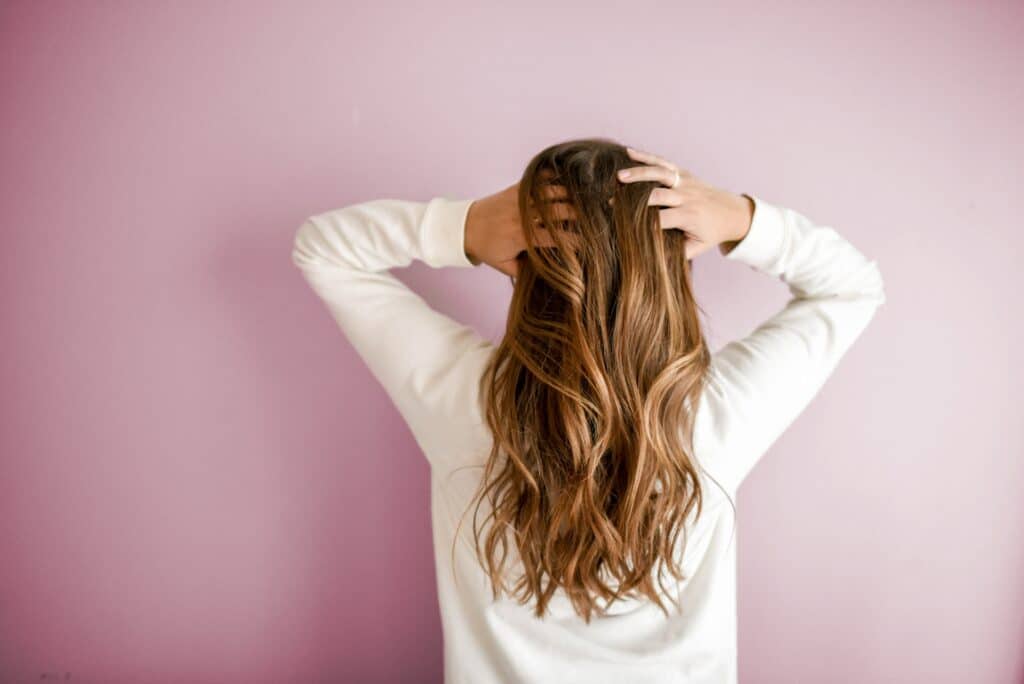
Table of Contents
Is it safe to dye your hair after giving birth?
You may have spent the past 9 months worrying about your baby and doing everything possible to keep them safe. From watching what you eat to reducing your caffeine intake, pregnant women make many sacrifices for the health and safety of their little ones.
This motherly instinct certainly doesn’t stop after your baby is born and when you have a newborn baby, it’s still just as important to watch what you consume and expose your baby to, especially if you’re breastfeeding.
Since the chemicals in hair dye don’t enter your bloodstream, it’s considered safe to dye your hair after you’ve given birth and while you’re breastfeeding.
How long do you have to wait to dye your hair after having a baby?
Although several studies have been done that show it is most likely safe to dye your hair after the first trimester while pregnant, there is very little information about the potential consequences of dyeing your hair after having the baby, and especially while breastfeeding.
The general consensus among most experts is that while direct exposure to the chemicals included in most hair dye could be harmful to a fetus or baby, the amount that they could be exposed to through the bloodstream or breastmilk is insignificant.
Most doctors simply recommend that you wait out of an abundance of caution. Whether you choose to have your hair done professionally, do it yourself at home, or use an alternative natural method, there is not a proven medical reason to wait until a specific time after giving birth.
Can I dye my hair if I have postpartum hair loss?
You may, however, want to keep in mind that many mothers lose a lot of hair after giving birth. Postpartum hair loss is really just your body and hormones returning to normal after pregnancy, but it can be disturbing and disheartening, especially for new moms.
This postpartum hair loss usually happens around the third month, and you may want to consider not chemically treating your hair during this time. You may also experience oily hair after pregnancy.
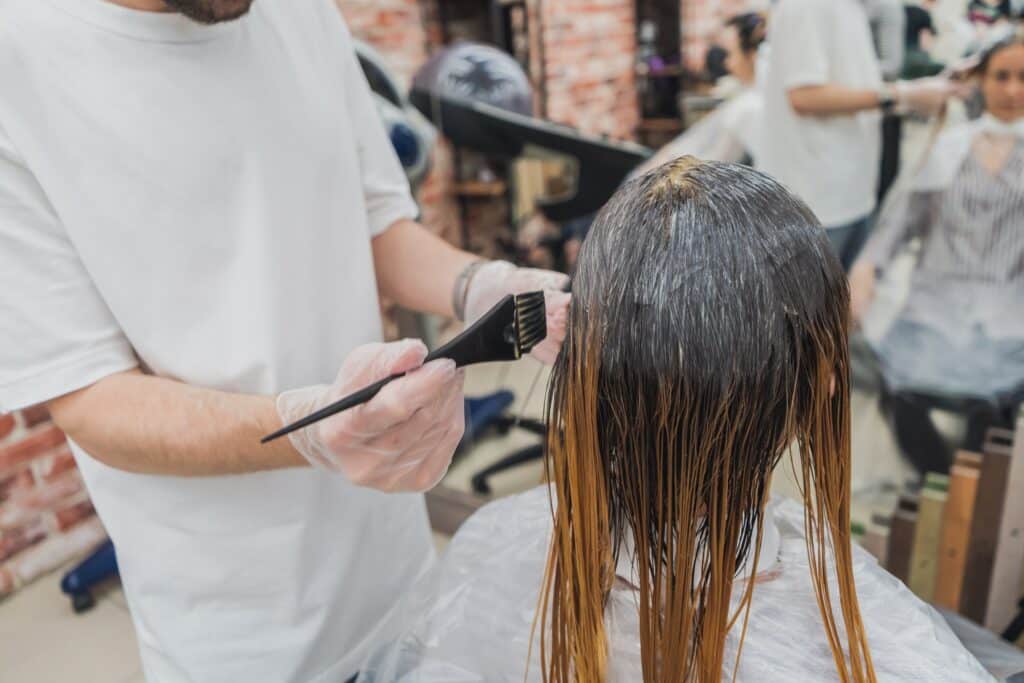
What about bleaching hair after giving birth?
Bleaching your hair while breastfeeding is similar to dyeing it, but there are no truly natural ways to significantly lighten your hair because you are stripping color out rather than adding it on top of your natural color.
Like dyeing, very little bleach will be absorbed into the bloodstream through a healthy scalp, and even less will make it into your milk.
You might want to take into account that the smell of bleach in your hair can linger and be unpleasant for your baby. Some babies are particularly sensitive to smells and will not latch on if there are any distracting smells, such as a heavily scented lotion or body wash, or perfume.
If you have any bleach left after you lighten your hair, be sure to store it safely out of reach of your child.
Is it safe to dye your hair with a baby in the house?
Aside from the concern about your baby being exposed to chemicals through your breastmilk, you might also worry about dying your hair while your baby is in the house. The biggest concern about dying your hair with a baby in the house is the amount of time the chemicals need to be in your hair.
When you are dying your hair, there are several safety precautions that are recommended even when there is not a baby or young child in the house. These precautions are:
- Always wear protective gloves when dyeing your hair
- Rinse your scalp thoroughly after the dyeing process is complete
- Only dye your hair in a well-ventilated room
For the most part, being conscientious about following these best practices and keeping young lungs away from the fumes will ensure that it is safe to dye your hair with a newborn or young child.
If possible, try to have someone else in the house who can watch the baby while you dye and rinse your hair, or be sure to plan your dyeing time around your baby’s nap or bedtime.
In addition to being careful during the actual dyeing process, you need to be diligent about how you are storing and disposing of the chemicals. Keep the box out of reach until you are ready to use it.
As soon as you are done, gather everything that was used and either throw it away immediately or store it where your baby cannot get to it and consume the opened chemicals.
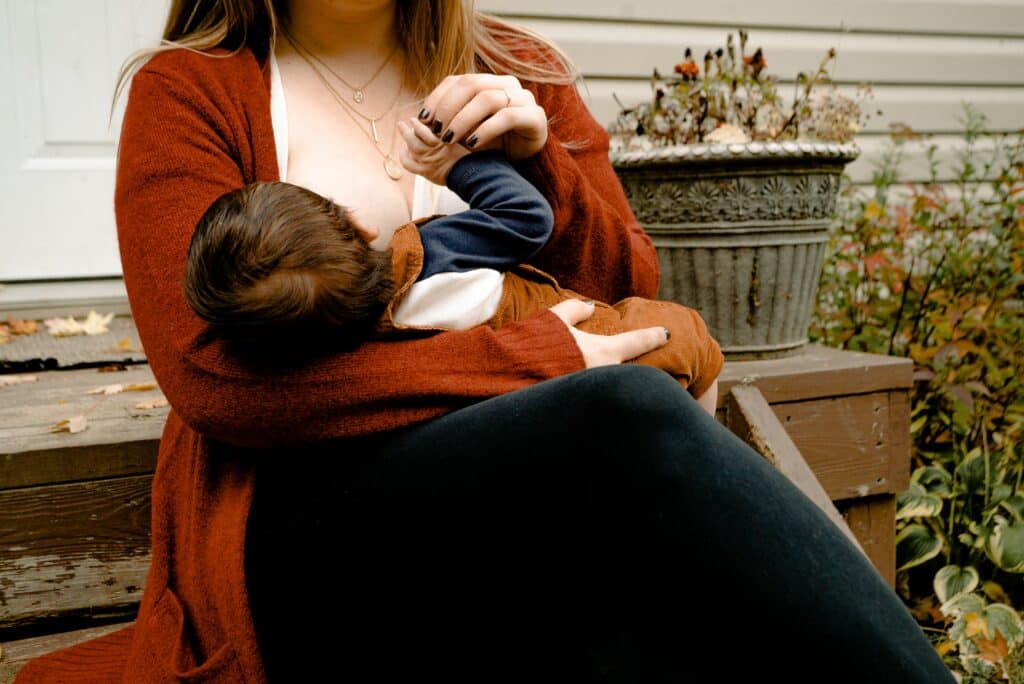
What’s the best hair dye for breastfeeding moms?
In a perfect world, you could look for any organic hair dye and be confident that it would be, if not harmless, at least safer for your child to be exposed to. Unfortunately, the FDA does not regulate the use of the word “organic” on the packaging, and “natural” only means that the ingredient was derived from a natural source, not that it is good for you.
It is important to remember that all commercial dyes almost certainly contain some chemicals in order to set the color. With that being said, some chemicals are definitely safer than others and there is a general agreement that we should look to avoid parabens, phthalates, ammonia, para-phenylenediamine (PPD), and resorcinol.
Keep in mind that leaving out these chemicals means that the hair dye might be less effective than what you’re used to. If you’re looking for a safer option, here are a couple alternatives:
Herb Speedy PPD and Ammonia-free Hair Color
It’s pretty hard to find a hair dye that actually leaves out PPD and other harmful ingredients but also has good reviews from actual users.
This particular dye is free from all of the bad chemicals in our list and nearly all users report that the dye worked better than they expected. It’s actually produced by a pharmaceutical company in Korea (the current beauty product capital of the world) and really isn’t any more expensive than your standard hair dye, which surprised me.
The Henna Guys 100% chemical-free hair dye
A henna dye is a little different than your typical commercial hair dye, but it could be just what you are looking for if you are trying to avoid chemicals. That’s because henna is a completely natural herb powder than applies color to your hair without chemical interactions. That means you won’t have to worry at all about potential chemical interactions or allergies.
The downsides to this method, however, are:
- You cannot lighten hair
- It doesn’t guarantee 100% coverage
- Semi-permanent – it will not last as long as permanent dyes
Still, these dyes are pretty highly rated and nearly all users that understood the limitations of this dyeing method were happy with their results. Most people report getting anywhere from 2 to 8 weeks of color out of this dye before they needed to redo it.
Alternative techniques
If you don’t feel comfortable using chemicals at all while breastfeeding, there are several chemical-free options for darkening, lightening, and adding color, many of which use colorants that you may have in your kitchen already.
- Carrot Juice – Carrot juice can be mixed with a carrier oil like coconut oil or olive oil to tint your hair reddish-orange. This method works best if your hair is light-colored to start with.
- Beet Juice – This has a similar effect to carrot juice, but the final result is a cooler tone.
- Lemon Juice – Spritzing your hair with lemon juice can help create subtle sun-kissed highlights. Because this is a bleach rather than a dyeing process, this is a permanent color change and will not fade away.
- Chamomile Tea – If you already have blonde or light hair, a weekly tea treatment can lighten it and help keep it bright.
By the way, I also tackled the topic of getting balayage hair dye while pregnant or breastfeeding as an alternative to a full hair dye job. This technique doesn’t hit the roots of your hair so there is very little, if any, skin contact!
Is it safe to dye your hair while breastfeeding?
There hasn’t been much research done on the effects of dying your hair while breastfeeding, but there has been a few studies on pregnant women that indicate neither permanent or semi-permanent dyes are toxic and only a small amount of dye is absorbed through the scalp. Even less than that will be passed on through the breastmilk.
If you are concerned about any chemicals being passed to your nursing baby, consider getting highlights instead of a full dye job since they are painted on individually. In this case, you can tell your stylist to avoid direct contact with your scalp.
Alternatively, using one of the natural dyes noted above will minimize the harmful chemicals that could potentially be absorbed.
Frequently Asked Questions (FAQs)
Can I color my hair 1 month after giving birth?
There isn’t any research that shows you need to wait a certain amount of time after giving birth to dye your hair. If you’re unsure, you can wait as a precaution, but even if you’re breastfeeding, it should be safe for you to use hair dye.
How long after c-section can I dye my hair?
No matter how you give birth, it’s normally safe for you to dye your hair afterwards. If you had a c-section, you may want to consider the time it takes to dye your hair and if you’re able to maintain it while you’re recovering.
Will dying my hair affect breastfeeding?
If any of the chemicals from hair dye enter your bloodstream, it’s an incredibly minimal amount and even less would make it into your breastmilk. For this reason, it’s considered safe to dye your hair while you’re breastfeeding.
Can you dye your hair during postpartum hair loss?
It won’t necessarily be harmful to dye your hair during postpartum hair loss, but keep in mind your hair may be oily after birth and you may lose a lot of hair in the first few months postpartum. For best results, wait until you resume normal hair growth.
Can I have hair treatment after giving birth?
It’s considered safe to dye or bleach your hair after giving birth as long as you take the necessary safety precautions to keep your baby away from the chemicals. If you do bleach your hair, keep in mind the smell of the bleach may linger and bother your baby.
Conclusion
After 9 months of pregnancy, many women look for a way to feel like themselves again. Dying your hair is one way to bring back your confidence and do something for yourself. However, you may wonder is it safe to dye your hair after giving birth? In most cases, it’s perfectly safe to dye your hair, even if you’re breastfeeding.

